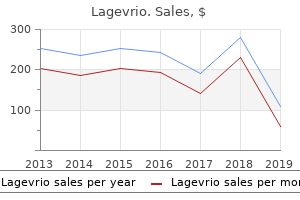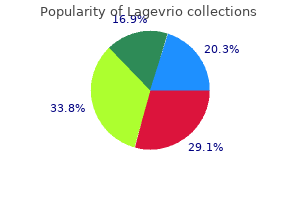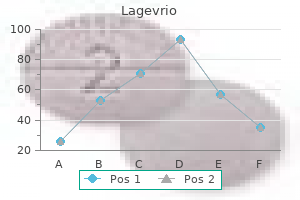


OLSSON'S IS CLOSED
Thank you to all our loyal customers who supported us for 36 years
"Order lagevrio 200 mg without a prescription, hiv infection rates new york city".
By: I. Redge, M.B. B.CH. B.A.O., M.B.B.Ch., Ph.D.
Associate Professor, University of South Carolina School of Medicine
If you make the alternative action anti viral hand wipes purchase generic lagevrio on line, so the forearm factors away from your trunk hiv infection by race cheap lagevrio online master card, your humerus undergoes lateral body half in the identical plane hiv infection rate ukraine generic lagevrio 200 mg amex. For example hiv symptoms two weeks after infection generic 200 mg lagevrio visa, to carry a suitcase from the floor, you elevate your scapula; in setting it down again, you depress the scapula. Your shoulder protracts, for example, if you reach in entrance of you to push a door open. It retracts when you return it to the resting (zero) position or pull the shoulders back to stand at navy attention. Such exercises as rowing a ship, bench presses, and push-ups contain repeated protraction and retraction of the shoulders. If an artist standing at an easel reaches ahead and attracts a circle on a canvas, she circumducts the higher limb; the shoulder stays stationary whereas the hand strikes in a circle. A baseball player winding up for the pitch circumducts the upper limb in a more excessive "windmill" style. One can also circumduct a person finger, the hand, the thigh, the foot, the trunk, and the head. Vacula/McGraw-Hill Education pro = ahead; trac = to pull or draw re = back; trac = to pull or draw 19 circum = round; duc = to carry, lead Rotation. Good examples of lateral and medial rotation of the humerus are its actions in the forehand and backhand strokes of tennis. If you stand and turn your right foot so your toes level toward your left foot, then flip it so your toes level away from the left food, your femur undergoes medial and lateral rotation, respectively. Powerful left and proper rotation on the waist is essential in such actions as baseball pitching and golf. Powerful proper and left rotation on the waist is necessary in baseball pitching, golf, discus throwing, and other sports. Supination and Pronation Supination and pronation are known primarily as forearm movements, however see additionally the later dialogue of foot movements. During these actions, the concave finish of the disc-shaped head of the radius spins on the capitulum of the humerus, and the edge of the disc spins in the radial notch of the ulna. As an help to remembering these terms, consider it this manner: You are vulnerable to stand in the most comfortable place, which is with the forearm pronated. But when you had been holding a bowl of soup in your palm, you would want to supinate the forearm to maintain from spilling it. The threads of screws and bolts are designed with the relative power of the supinator in thoughts, so the greatest energy can be applied when driving them with a screwdriver in the proper hand. We will now consider a couple of physique areas that mix the foregoing motions, or which have distinctive actions and terminology. Radius Ulna (a) Supination Radius Ulna Special Movements of the Head and Trunk Flexion of the backbone produces forward-bending actions, as in tilting the top ahead or bending on the waist in a toetouching exercise (fig. Extension of the vertebral column straightens the trunk or the neck, as in standing up or returning the top to a forward-looking zero position. Hyperextension is employed in looking up toward the sky or bending over backward (fig. Lateral flexion is tilting the top or trunk to the right or left of the midline (fig. Note the means in which these forearm rotations have an result on the relationship of the radius and ulna. Vacula/McGraw-Hill Education Special Movements of the Mandible Movements of the mandible are concerned especially with biting and chewing. Most people have some extent of overbite; at relaxation, the higher incisors (front teeth) overhang the decrease ones. In preparation to bite, we due to this fact protract the mandible to bring the lower incisors ahead. To truly take the bite, we must depress the mandible to open the mouth, then elevate it so the incisors cut off the piece of food.

Explain how the complementarity of kind and performance is reflected in the reality that the dermis has two histological layers and never just one hiv infection after 2 years order genuine lagevrio line. Bones of the limbs and vertebral column help the body; the mandible and maxilla support the teeth; and a few viscera are supported by nearby bones hiv infection from dentist discount lagevrio 200 mg online. Bones enclose and shield the brain hiv infection through urethra cheap lagevrio 200 mg with mastercard, spinal cord hiv infection rate south korea lagevrio 200mg fast delivery, coronary heart, lungs, pelvic viscera, and bone marrow. Limb movements, respiration, and other actions are produced by the action of muscle tissue on the bones. Bone tissue buffers the blood towards excessive pH adjustments by absorbing or releasing alkaline phosphate and carbonate salts. Red bone marrow is the main producer of blood cells, together with cells of the immune system. I n art and history, nothing has so usually symbolized death as a cranium or skeleton. The dry bones presented for laboratory examine might wrongly suggest that the skeleton is a nonliving scaffold for the body, just like the metal girders of a building. The skeleton is permeated with nerves and blood vessels, which attests to its sensitivity and metabolic activity. In this chapter, we study bone as a tissue-its composition, its functions, the way it develops and grows, how its metabolism is regulated, and a few of its disorders. This will provide a foundation for understanding the skeleton, joints, and muscular tissues in the chapters that comply with. Also current are blood, bone marrow, cartilage, adipose tissue, nervous tissue, and fibrous connective tissue. The word bone can denote an organ composed of all these tissues, or it could possibly denote just the osseous tissue. Most of the cranial bones are within the form of thin curved plates called flat bones, such as the paired parietal bones that type the dome of the highest of the head. The sternum (breastbone), scapula (shoulder blade), ribs, and hip bones are also flat bones. The most essential bones in motion are the lengthy bones of the limbs-the humerus, radius, and ulna of the arm and forearm; the femur, tibia, and fibula of the thigh and leg; and the metacarpals, metatarsals, and phalanges of the palms and ft. Like crowbars, long bones function inflexible levers which are acted upon by skeletal muscle tissue to produce the major physique actions. Cartilage, the forerunner of most bones in embryonic and childhood development, covers many joint surfaces within the mature skeleton. At the ends of the bone, the central house is occupied by a more loosely organized type of osseous tissue referred to as spongy (cancellous) bone. A narrow zone of spongy bone also occurs just contained in the cortical bone of the shaft and in the center of most flat, irregular, and brief bones. The skeleton is about threequarters compact bone and one-quarter spongy bone in dry weight. The diaphysis provides leverage, and the epiphysis is enlarged to strengthen the joint and provide added surface area for the attachment of tendons and ligaments. Mature bones often exhibit an epiphysial line of slightly denser spongy bone between the epiphysis and diaphysis. This is a remnant of a childhood development zone referred to as an epiphysial plate, detailed later. The joint floor the place one bone meets another is covered with a layer of hyaline cartilage called the articular cartilage. Together with a lubricating fluid secreted between the bones, this cartilage permits a joint to move way more simply than it will if one bone rubbed directly in opposition to the opposite. Some collagen fibers of the outer layer are steady with the tendons that bind muscle to bone, and some penetrate into the bone matrix as perforating fibers. The periosteum thus provides robust attachment and continuity from muscle to tendon to bone. A thin layer of reticular connective tissue referred to as the endosteum7 lines the internal marrow cavity, covers all the honeycombed surfaces of spongy bone, and features a canal system discovered throughout the compact bone. Flat bones have a sandwichlike development with two layers of compact bone, known as the inside and outer tables, enclosing a middle layer of spongy bone (fig. What is the functional significance of an extended bone being wider at the epiphyses than on the diaphysis A moderate blow to the cranium can fracture the outer desk of compact bone, however the diploe might take up the influence and leave the inside table and mind unharmed. Both surfaces of a flat bone are covered with periosteum, and the marrow spaces amid the spongy bone are lined with endosteum.

This probably accounts for only a small fraction of solute exchange throughout the capillary wall hiv infection rate definition discount generic lagevrio uk, but fatty acids hiv infection rates among prostitutes cheap lagevrio online mastercard, albumin hiv infection rates new jersey purchase lagevrio online pills, and some hormones similar to insulin transfer across the endothelium by this mechanism antiviral krem effective 200 mg lagevrio. Typically, fluid filters out of the arterial end of a capillary and osmotically reenters it at the venous end. This fluid delivers materials to the cells and rinses away their metabolic wastes. It may seem odd that a capillary may give off fluid at one point and reabsorb it at another. This comes about as the end result of a shifting stability between osmosis and hydrostatic stress (fig. Hydrostatic stress is the bodily force exerted by a liquid in opposition to a surface corresponding to a capillary wall. The hydrostatic stress of the interstitial space has been tough to measure, however a typical worth accepted by many authorities is �3 mm Hg. The unfavorable worth indicates that it is a slight suction, which helps draw fluid out of the capillary. Oncotic strain tends to draw water into the capillary by osmosis, opposing hydrostatic stress. Materials move through the capillary wall by way of filtration pores (in fenestrated capillaries only), by transcytosis, by diffusion through the endothelial cells, and through intercellular clefts. The mechanisms of movement by way of the capillary wall are diffusion, transcytosis, filtration, and reabsorption. Glucose and oxygen, being extra concentrated in the systemic blood than in the tissue fluid, diffuse out of the blood. Carbon dioxide and different wastes, being more concentrated in the tissue fluid, diffuse into the blood. Note the shift from net filtration at the arterial end (left) to web reabsorption at the venous finish (right). Thus, we get the following: Hydrostatic strain Blood stress Interstitial pressure Net hydrostatic stress Net reabsorption pressure Oncotic pressure Net hydrostatic stress Net reabsorption strain � 20in 13out 7in + 10out 3out 13out the prevailing force is inward on the venous end as a outcome of osmotic strain overrides filtration strain. The net reabsorption strain of seven mm Hg inward causes the capillary to reabsorb fluid at this end. The solely stress that adjustments significantly from the arterial end to the venous finish is the capillary blood pressure, and this modification is liable for the shift from filtration to reabsorption. However, since capillaries branch along their length, there are more of them at the venous finish than on the arterial end, which partially compensates for the difference between filtration and reabsorption pressures. Consequently, capillaries in most places reabsorb about 85% of the fluid they filter. The relaxation is absorbed and returned to the blood by means of the lymphatic system, as described within the subsequent chapter. This process, referred to as solvent drag, will be essential in our discussions of kidney operate in chapter 23. In a resting tissue, most precapillary sphincters are constricted and the capillaries are collapsed. In lively muscular tissues, capillary stress rises to the point that filtration overrides reabsorption along the entire length of the capillary. Traumatized tissue releases such chemical compounds as substance P, bradykinin, and histamine, which enhance permeability and filtration. Numerous conditions can improve the rate of capillary filtration and accumulation of fluid in the tissues. Kidney failure, for example, results in water retention and hypertension, elevating capillary blood pressure and filtration fee. Histamine dilates arterioles and raises capillary pressure and makes the capillary wall extra permeable. Capillaries usually turn into extra permeable in old age as well, placing aged individuals at increased danger of edema.

In severe edema hiv infection oral buy generic lagevrio 200mg, so much fluid can switch from the blood vessels to the tissue areas that blood volume and pressure drop low enough to trigger circulatory shock (described in the subsequent section) antiviral rx 200mg lagevrio free shipping. List the three mechanisms of capillary exchange and relate each one to the structure of capillary partitions hiv infection from undetectable buy lagevrio canada. How can a capillary shift from a predominantly filtering position at one time to a predominantly reabsorbing position at one other State the three fundamental causes of edema and explain why edema may be dangerous hiv infection rate in uganda cheap 200 mg lagevrio otc. Such experiments demonstrated the existence of one-way valves in veins of the arms. In the house between O and H, what (if anything) would occur if the experimenter lifted his finger from level O The move of blood again to the heart, called venous return, is achieved by 5 mechanisms: 1. Pressure within the venules ranges from 12 to 18 mm Hg, and pressure on the point the place the venae cavae enter the guts, known as central venous stress, averages 4. Venous return additionally increases within the event of generalized, widespread vasoconstriction because this reduces the volume of the circulatory system and raises blood strain and flow. Thus, the big veins of the neck are usually collapsed or nearly so, and their venous stress is near zero. Contracting muscles squeeze the blood out of the compressed a part of a vein, and the valves make sure that this blood can go solely towards the guts (fig. This mechanism aids the circulate of venous blood from the belly to the thoracic cavity. That was left to his scholar, William Harvey, who performed easy experiments on the valves that you can easily reproduce. With another finger, he has milked the blood out of it as much as level O, the primary valve proximal to H. So as Harvey correctly surmised, the valves serve to guarantee a one-way move of blood towards the guts. To show this effect, maintain one hand below your waist and hold the opposite hand over your head. After about 1 minute, quickly deliver your two palms collectively and compare the palms. The hand held overhead will doubtless appear pale as a end result of its blood has drained out of it; the hand-held below the waist will doubtless be redder than normal due to venous pooling in its veins and capillaries. Venous pooling could be troublesome to individuals who must stand for prolonged periods-such as cashiers, barbers and hairdressers, members of a choir, and different people in navy service-and when sitting nonetheless for too long, as in a cramped seat on an extended airline flight. If enough blood accumulates within the limbs, cardiac output may fall so low that the mind is inadequately perfused and a person might expertise dizziness or syncope. This can usually be prevented by periodically tensing the calf and different muscles to keep the skeletal muscle pump energetic. Military jet pilots typically perform maneuvers that might cause the blood to pool within the abdomen and lower limbs, inflicting loss of vision or consciousness. Because of the thoracic pump, central venous strain fluctuates from 2 mm Hg whenever you inhale to 6 mm Hg whenever you exhale, and blood flows faster when you inhale. This is what produces the slight fluctuations in blood stress at the right end of the graph in determine 20. This creates a slight suction that attracts blood into the atria from the venae cavae and pulmonary veins. Hypovolemic shock, the most common form, is produced by a loss of blood volume because of hemorrhage, trauma, bleeding ulcers, burns, or dehydration. Water transfers from the bloodstream to substitute tissue fluid misplaced within the sweat, and blood volume could drop too low to maintain adequate circulation. Obstructed venous return shock happens when any object, similar to a rising tumor or aneurysm, compresses a vein and impedes its blood move. Venous pooling shock occurs when the body has a normal total blood volume, however too much of it accumulates within the decrease physique. Blood vessels of the skeletal muscles, lungs, and coronary circulation dilate, increasing flow.
Lagevrio 200mg overnight delivery. Missing link to understand spread of AIDS found: Scientist.